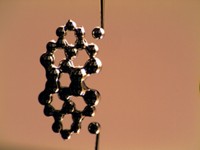Advertisement
Grab your lab coat. Let's get started
Welcome!
Welcome!
Create an account below to get 6 C&EN articles per month, receive newsletters and more - all free.
It seems this is your first time logging in online. Please enter the following information to continue.
As an ACS member you automatically get access to this site. All we need is few more details to create your reading experience.
Not you? Sign in with a different account.
Not you? Sign in with a different account.
ERROR 1
ERROR 1
ERROR 2
ERROR 2
ERROR 2
ERROR 2
ERROR 2
Password and Confirm password must match.
If you have an ACS member number, please enter it here so we can link this account to your membership. (optional)
ERROR 2
ACS values your privacy. By submitting your information, you are gaining access to C&EN and subscribing to our weekly newsletter. We use the information you provide to make your reading experience better, and we will never sell your data to third party members.
Materials
Surface Coating Tames Explosive Boiling
Superhydrophobic coating safeguards against explosive boiling-regime transition
by Mitch Jacoby
September 17, 2012
| A version of this story appeared in
Volume 90, Issue 38
A highly water-repellent silicon-based coating wards off the effects of a violent boiling process that can occur when hot solids contact water, according to a study published in Nature (DOI: 10.1038/nature11418). The finding may lead to chemical treatments for equipment used with water in high-temperature settings, such as nuclear power reactors. The familiar way in which water droplets dance across the surface of a hot iron or frying pan results from a levitating vapor film that remains stable when the surface temperature is above a critical value. Ivan U. Vakarelski of King Abdullah University of Science & Technology, in Saudi Arabia; Neelesh A. Patankar of Northwestern University; and coworkers used high-speed photography to monitor boiling processes on steel balls chemically treated to make their surfaces vary from hydrophilic to superhydrophobic. In one case, they found that immersing 20-mm hydrophilic balls heated to more than 400 °C in water caused the water to boil at the steel surface gently in a nearly bubble-free manner known as film boiling (shown, left). As the surface temperature cooled to 275 °C, the protective vapor layer collapsed, leading to an explosive transition to the “nucleate boiling” regime (right). A textured superhydrophobic coating completely suppresses the violent transition, they report.





Join the conversation
Contact the reporter
Submit a Letter to the Editor for publication
Engage with us on Twitter